Centrifuge Safety Guide
Our rotors meet the high standards we set for all products. Good maintenance, however, plays a major role in protecting your rotor and extending its life.
This page is designed to assist you in a program of regular rotor care and inspection… the best way to protect your rotor and samples investment!
Centrifuge rotor maintenance is critical to the protection of your samples
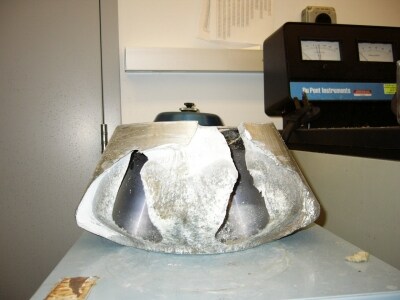
Each time you use a rotor, visually inspect its condition for signs of physical wear or damage:
- Corrosion in the rotor cavities or exterior surfaces
- Scratches or gouges to the base metal
- Missing or worn anodising
- Damage to contact points, such as thread, hubs and screws
To protect your samples, you may choose refrigerated centrifuges which offer the added benefit of cooling to protect from sample degradation caused by heat generated by the action of spinning.
Centrifuge and rotor maintenance is also critical for your security! Remember that the circumferential speed of a rotor is approximately 2,000km/hour, which is about the same as the speed of a bullet!
Imagine also the potential health hazard of blood being splashed around the centrifuge chamber. Biocontainment of the sample should always be a major consideration.
Incorrect Loading or Balancing
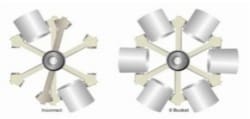
- Always run centrifuge with ALL buckets in place
- Always load buckets symmetrically
- Always balance adjacent and opposing loads within manufacturer’s recommended tolerance
- Always balance the centrifuge tubes (by weight, not just by eye), and put the balanced tubes in opposing positions in the rotor
Incorrect Attachment
Attachment to Centrifuge
- Superspeed rotors must be locked down to the centrifuge drive by tightening the lock knob
- Lowspeed rotors must be fastened by locking pin
- General purpose, small benchtop, andmicro-centrifuges must be fastened by locking nut or other mechanism as specified by manufacturer
- Rotor can fail due to excessive speed, causing catastrophic failure of centrifuge, injuring user – know the speed limits of the rotor and don’t exceed these. Max speed varies from one rotor to another; large rotors cannot be spun as fast as small ones
Always double check that your rotor is locked down before pressing start !
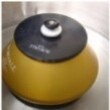
Load rotor on to the spindle making sure that the pins are at the set positions. Always load the rotor vertically (loading at small angles can cause rotor damage through scratching of the bore).
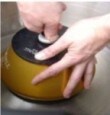
Lock the rotor to the spindle using the small locking nut - Remember to turn anti-clockwise until tight.
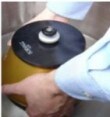
Always check the rotor is secure by giving it a gentle pull upwards.
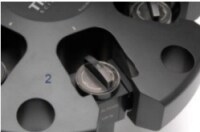
Swinging Bucket Rotors
- Buckets must be placed properly on the swinging arms
- Swinging bucket rotors must have all buckets in place
- Buckets should be cleaned and lubricated regularly to ensure a free swing out during the run
For swinging bucket rotors, gently swing out each bucket to ensure a free easy motion. Always double check before pressing start.
Consumable Failure
Centrifuge tubes can break in rotor due to excessive wear and tear or inappropriate use, causing imbalance of rotor, catastrophic failure of centrifuge, injuring user. Each tube has a Xg resistance, ensure you use the correct tubes for the sample type and the centrifuge you are using.
- Always make sure caps, adapters, o-rings and tubes are not degraded
- Body caps must be in good condition
- Discard all caps that have damaged or worn threads. Any wear on cap must be regarded as dangerous
- O-rings are not insignificant. They are an integral part of the rotor and tube design - they must be in place to run safely
- Lubricate O-rings with vacuum grease, replace immediately if there is any sign of damage
Overloading
- All rotors are designed with a maximum load tolerance at the maximum speed
- If the maximum load is exceeded then the maximum speed MUST be derated – ALWAYS check this in the manual and use the formula below
- Ultraspeed swinging bucket rotors used for gradient work – density of sample should be verified against speed and temperature to prevent point load failure

Corrosion
- Surface corrosion - caused by long term exposure to moisture or chemicals
- Stress corrosion - surface corrosion that is allowed to propagate until micro-cracks form deep into the structure of the rotor
How to prevent surface corrosion:
- Clean rotors between every use
- Thoroughly dry rotors between uses
- Remove adapters between runs
- Never use metallic objects to open or remove parts that may scratch the anodized surface
- Use cleaning substances /sterilisation methods that are chemically compatible with the rotor material. If your application is corrosive consider an alternative rotor material such as carbon fibre!
Fatigue
- Rotors are exposed to high g-forces and do wear out
- The molecular structure of the rotor changes as the metal elongates repeatedly – eventually they will fail!
- All rotors need to be retired – even when they appear to be in good condition. Metallic parts fatigue over repeated uses with no visible signs of wear
Have your rotors inspected regularly by a trained technician.
- Is my rotorcorrosion-free and the anodising intact?
- Is the rotor within its service life?
- Are the o-rings in place and not de-graded?
- Are samples balanced and loaded?
- Is the rotor secure?
- Are the tubes matched to the correct adapters?
- Are the tubes chemically compatible with what you are running in them?
- Correct usage-filling levels.
- Remove all bottles and adapters.
- Keep it clean - For general purposes clean with mild non-alkaline detergent and rinse with water.
- Turn upside-down on paper towel to allow complete drying.
- Make sure your rotors are inspected yearly by a trained professional.
Prevention is always the best policy.
Proper Handling
Improper installation can lead to failure so it is imperative to:
- Always lock rotors to the spindle, if applicable
- Ensure buckets are properly seated on their pins
- Always use the tightening tool on locking knobs and body caps
- Use the proper rotor extractor tool to remove a rotor
- Avoiddropping or striking the rotor against a hard surface
- Avoidputting anything inside the rotor that could scratch or nick the surface
- Use biocontainment leads to use for hazardous products
In addition, ensure that all tubes, bottles and adapters are being used within their specified limits and according to the manufacturer's directions. Tube or bottle failures during centrifugation can result in minor to severe damage to rotors and centrifuges.
Storage
Any moisture left on a metal rotor can initiate corrosion, so after cleaning ensure proper storage:
- Remove all adapters from rotor cavities when not in use
- Dry and store upside-down on a PTFE-coated or plastic matting to allow for airflow or a ventilated shelf to avoid gathering condensation in the cavity or bucket bottom
Cleaning and Maintenance
Metal corrosion can be avoided by following a routine maintenance program after each rotor use:
- Clean rotors, lids, adapters and any associated parts with a 1% solution of a mild non-alkaline detergent such as dishwashing liquid, rinse with distilled water and dry thoroughly with a soft cloth
- Do not use strong alkaline laboratory detergent on aluminum rotors; if encrusted material is present, remove it with a soft, twisted-bristle brush and the 1% non-alkaline soap solution
- For benchtop, lowspeed and superspeed swinging bucket rotors, keep the bucket trunnion pins clean and lubricated
- Lubricate o-rings with vacuum grease and metal rotor threads with anti-galling grease weekly, when specified in rotor manual
- Apply an additional coating of paste wax to prolong the life of an anodized coating
Decontamination
Given the nature of samples processed in a rotor, biological or radioactive contamination is possible.
For biological contamination of rotors, a 2% glutaraldehyde solution, ethylene oxide or ultraviolet radiation are the recommended methods of sterilization, while for a rotor that may be contaminated by a radioactive sample, use a solution of equal parts of 70% ethanol, 10% SDS and water.
In addition:
- Do not use chlorine bleach on aluminum rotors
- When autoclaving, rotor components should be separated
- If sterilization is not necessary, a 70% solution of ethanol can be used
- Most commercially available detergents for radioisotopic contamination are not
compatible with aluminum or anodized coatings and should not be used - Rinse with ethanol, followed by water and dry with a soft cloth



